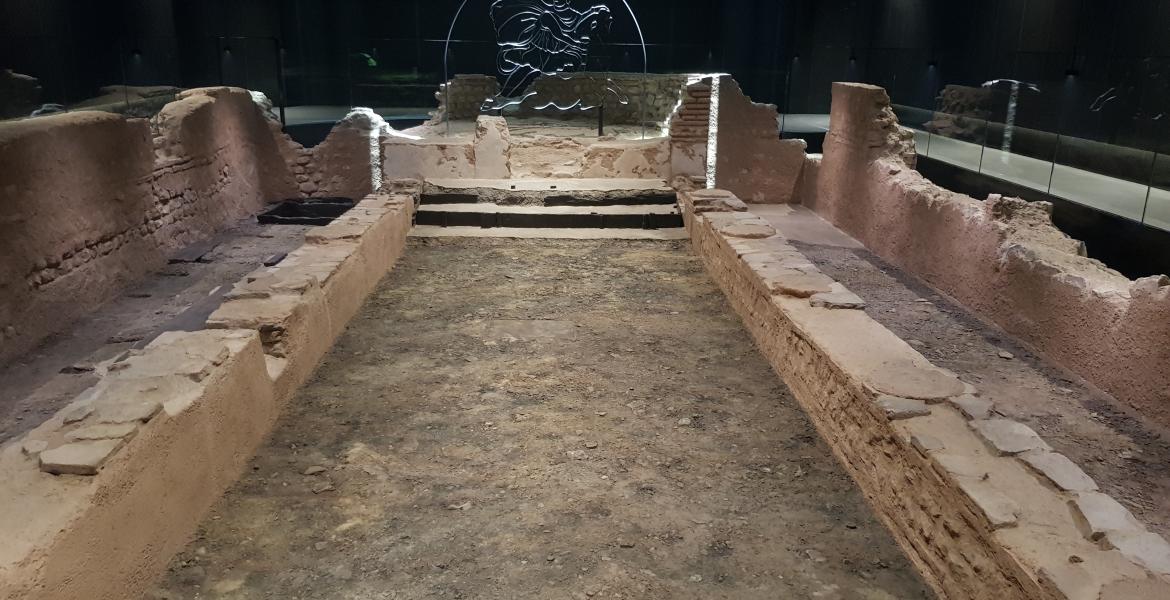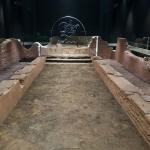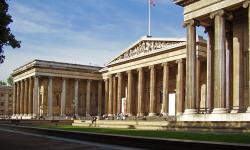London Mithraeum
The London Mithraeum, or temple to Mithras (a bull-sacrificing deityA non-specific supreme being in monotheistic traditions, or a god or goddess. of friendship, contract, and order, who achieved cult status in the Roman world), was discovered during excavations in 1954. Originally built in the third century CE'Common era', the non-religious way of saying AD ('anno Domini', or 'the year of our lord').'Common era', the non-religious way of saying AD ('anno Domini', or 'the year of our lord').'Common era', the non-religious way of saying AD ('anno Domini', or 'the year of our lord'). along the now-covered River Walbrook, which marked the boundary of Roman London and provided an important water source to many of the city's inhabitants, it was moved stone-by-stone 100 metres to Temple Court, where it was badly reconstructed at street level. However, after Bloomberg purchased the original site for its European headquarters in 2010, it decided to relocate the Mithraeum to (almost) its original position. The Temple can now be found seven metres below current street level, its entrance hidden in the Bloomberg building.
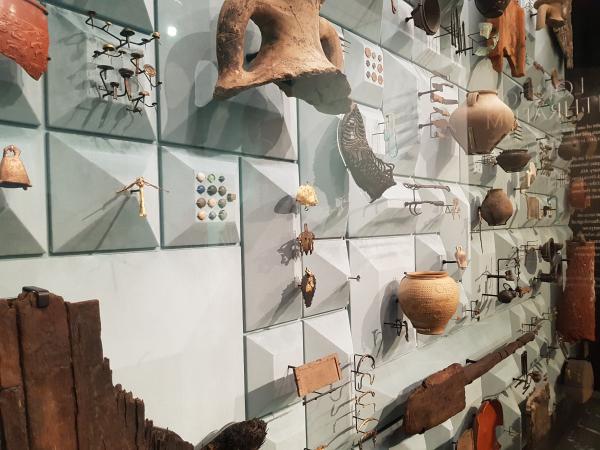
It feels reasonably anachronistic to enter an almost-2,000-year-old temple through a twenty-first-century building that showcases a number of modern art installations in its foyer. However, the approach to the temple is tastefully done. Displayed at street level are hundreds of artefactsObjects made by humans that are of historical interest.Objects made by humans that are of historical interest.Objects made by humans that are of historical interest. found at the site, some of which - such as children's shoes and fragments of stylus writing tablets - are in amazing condition and truly breathtaking. Rather than simply being a cabinet display, the iPads provided turn it into an interactive experience and give considerable detail on the items. Artefact hunt and other activity sheets for children provide another way of getting the most out of the exhibit.
The sense of walking into the past increases as we progress down the stairs to Roman level, following a London timeline as we do; we see where street level was throughout the ages, for example, at the time of the Blitz and the Great Fire. Another display, this time of replicas of the statues found at the site (the originals now being housed in the Museum of London), greets us at the bottom, which helps to pass the time before we are ushered into the temple space.
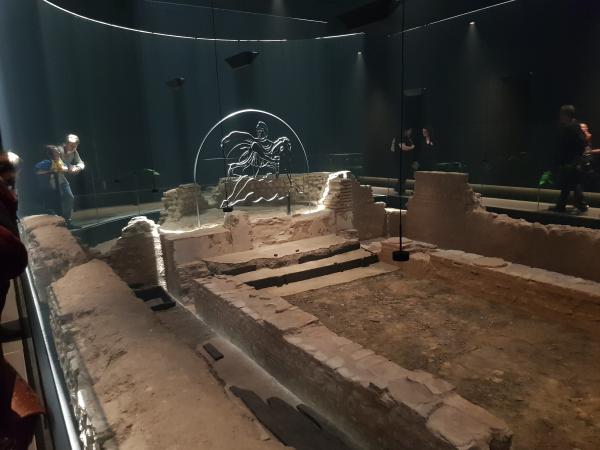
When booking the (free) tickets for the Mithraeum, I found it strange that the tickets were timed. I began to understand why as the dark space we were shown into gradually lightened to reveal not just the remains of the temple but also - through clever use of light and smoke - the walls, columns, and their shadows as well. The audio of background chatter and Latin chanting added further substance to what was an inspiring and extraordinary way to experience the Roman temple. It was an exceptional and brilliantly sympathetic approach to recreating the atmosphere of the ancient cult's temple and its rites, inducing awe and a sense of spirituality in all those watching.
I was almost surprised when the lights came up and brought me back to the present. We were given a few minutes (more would have been welcome) to wander around the lit temple and to take pictures, before making our way back up to street level and the present. It was a short visit - it is a small museum - but it left me with an overwhelming feeling of having witnessed an historical event. It is, obviously, not exact: there are no written testimonies of Mithraic rites to inform the show, which is based on supposition, archaeological evidence, and comparisons with other cults and religions. Yet, the experience was emotional and created an impression; even more so on my children, who left wide-eyed and open-mouthed. And it is this sense of wonder, of having actually witnessed something occult and historic, that makes the London Mithraeum worth visiting: they have brought the (much-moved) foundations of an ancient building back to life.
- Log in to post comments


